Prefer to listen in? Play the audio here:
Inflation is back in the headlines—and for good reason. Recent data shows that consumer prices continued to rise in December 2024, with year-on-year total inflation hitting 2.9%, the highest rate since July. Although this figure may seem relatively moderate compared to previous years, it still exceeds the Federal Reserve’s 2% inflation target and underscores why policymakers are taking a cautious approach to lowering interest rates. For retirees who rely on fixed incomes or investment portfolios, understanding the latest inflation trends and adjusting their financial plans is crucial. Below is a closer look at what’s driving inflation, how it factors into Federal Reserve policy, and, most importantly, how retirees can better prepare for the months and years ahead.
Inflation Trends and Key Drivers
In December, the overall Consumer Price Index (CPI) increased 2.9% on a year-over-year basis, an uptick from November’s 2.7%. This marks three consecutive months of increasing headline inflation, a pattern that can erode the purchasing power of retirees if it continues. While total CPI includes the more volatile components of food and energy, core CPI strips these out to provide a clearer picture of underlying inflation. In December, core CPI came in at 3.2%, edging down only slightly from 3.3% in November. This level remains persistently above the Fed’s 2% target, indicating that core elements of the economy—such as housing, healthcare, and services—are still contributing to higher costs.
Headline vs. Core Inflation
Headline inflation is what you feel most immediately—think spikes at the gas pump or in grocery bills.
Core inflation excludes food and energy, helping gauge whether the broader “everyday” prices of items like housing or healthcare are consistently rising.
Both measures are important, but headline inflation tends to grab headlines (and pocketbooks) right away, whereas core inflation shows whether long-term price pressures are easing or intensifying beneath the surface. Another aspect of inflation that befuddles many is that it’s cumulative. That is, when we hear in the news that “inflation is coming down,” it doesn’t necessarily mean prices are falling. Take restaurant prices, for example: they jumped dramatically in 2022—by about 8%—and haven’t come down significantly since. While the rate of increase has dropped from 8% to around 3%, those earlier price hikes have largely stuck around.
Producer Price Pressures
On the production side, the year-over-year Producer Price Index (PPI) also accelerated in December, ticking up to 3.3% from 3.0%. Rising producer prices often foreshadow higher costs at the consumer level. While core PPI (excluding food, energy, and trade) decelerated modestly, the persistent elevation signals there may still be upward pricing pressure working its way through supply chains, eventually impacting consumers and retirees’ household budgets.
The Federal Reserve’s Interest Rate Outlook
Despite hopes that the Federal Reserve might start easing its policy sooner rather than later, the combination of elevated inflation and strong labor market data makes a January 2025 rate cut improbable. The Fed appears to be in “wait-and-see” mode, taking time to assess whether current inflation pressures subside or continue into the spring.
Eyes on Q2 2025
Many economists predict inflation could cool by the second quarter of 2025 due to so-called “base effects”—when high inflation readings from a year earlier roll out of the 12-month calculation. If prices level off, the Fed could have enough justification to start easing rates in May or June. Still, this is speculative, and retirees should maintain flexibility in their financial planning.
Any interest rate moves tend to reverberate quickly across financial markets. A faster-than-expected deceleration in inflation could trigger more substantial rate cuts and potentially lift equity and bond prices—welcome news for retirees invested in diversified portfolios. Conversely, if inflation remains stubbornly high, the Fed may delay rate cuts, which can limit bond price appreciation and dampen equity performance. Staying tuned to inflation data and Fed announcements is critical for timely portfolio adjustments.
What Inflation Means for Retirees (And What You Can Do About It)
Inflation poses unique challenges for retirees, who often rely on fixed incomes or investment withdrawals to cover daily expenses. Below are four common concerns—in areas such as purchasing power, interest rates, housing, and healthcare—along with practical steps you can take to address each one.
1.) Purchasing Power Concerns
With prices climbing on everything from groceries to travel, your money may not stretch as far as you’d like. Although a 2.9% headline inflation rate might sound manageable, certain categories like energy and healthcare frequently rise faster than the overall average—areas where retirees tend to spend more. This creates a strain on budgets reliant on Social Security or steady retirement withdrawals.
How to Address It:
Review Your Spending Plan: Track monthly expenses closely, especially housing, utilities, and healthcare. Adjust your budget proactively so inflation doesn’t erode your day-to-day purchasing power.
Stay Flexible and Diversified: While it’s natural for retirees to lean into conservative assets, a well-balanced portfolio (equities, bonds, and alternatives) can help mitigate inflation risk.
2.) Interest Rates and Your Retirement Income
Slightly higher or sustained interest rates can be a double-edged sword. On one hand, retirees relying on cash and short-term fixed-income investments may benefit from improved yields on savings accounts, CDs, and money market funds. On the other hand, persistent inflation could reduce the real (inflation-adjusted) return on these assets. If the Fed lowers rates later in the year, newly issued bonds or CDs may also offer lower yields.
How to Address It:
Review Fixed-Income Holdings: Keep an eye on interest rate trends and bond yield opportunities. If a rate cut is delayed, you might lock in attractive yields now. Just ensure the real return (after inflation) remains positive.
Maintain a Cash Reserve: You still need a sufficient emergency fund—even if real returns on savings are modest. This cushion protects you from tapping longer-term investments in market downturns or emergencies.
3.) Housing and Rental Costs
A notable driver of core inflation is housing costs—owners’ equivalent rent and actual rental prices. If you’re considering downsizing your home, or renting, be aware that rising rents can take a larger bite out of your budget. This is particularly significant for those relocating to areas with tight housing markets.
How to Address It:
Review Your Spending Plan (Again): As mentioned above, ensure your budget reflects possible rent increases or higher property taxes (if you own a home).
Stay Flexible and Diversified: If you’re freeing up equity from selling a home, consider reinvesting some proceeds to potentially outpace inflation while keeping a portion for liquidity and emergencies.
4.) Healthcare Spending
Even if the most recent inflation report shows only a marginal rise in healthcare costs, retirees should brace for potential spikes—whether from new policy changes or medical supply chain issues. Healthcare inflation often outpaces general inflation, which can significantly affect retirees with fixed incomes or chronic medical needs.
How to Address It:
Maintain Adequate Savings and Insurance: Consider reviewing or updating your health insurance or supplemental coverage to reduce out-of-pocket surprises. Keep some liquid savings specifically for medical expenses.
Long-Term Budget Planning: Factor in healthcare cost inflation (often higher than the headline rate) in your long-term retirement projections. Adjust withdrawals or plan for potential premium increases.
Planning Ahead
Proactively monitoring both your expenses and your retirement portfolio is your best defense against the bite of inflation. By combining prudent budgeting, a diversified investment approach, and close attention to shifting interest rates or healthcare costs, you can preserve your purchasing power and protect your hard-earned nest egg.
Ready to take the next step? Call us today at (925) 938-2023 to schedule a review of your financial or retirement plan with an Aspire Planning Associates advisor. Your future self will thank you for staying proactive and well-prepared.



